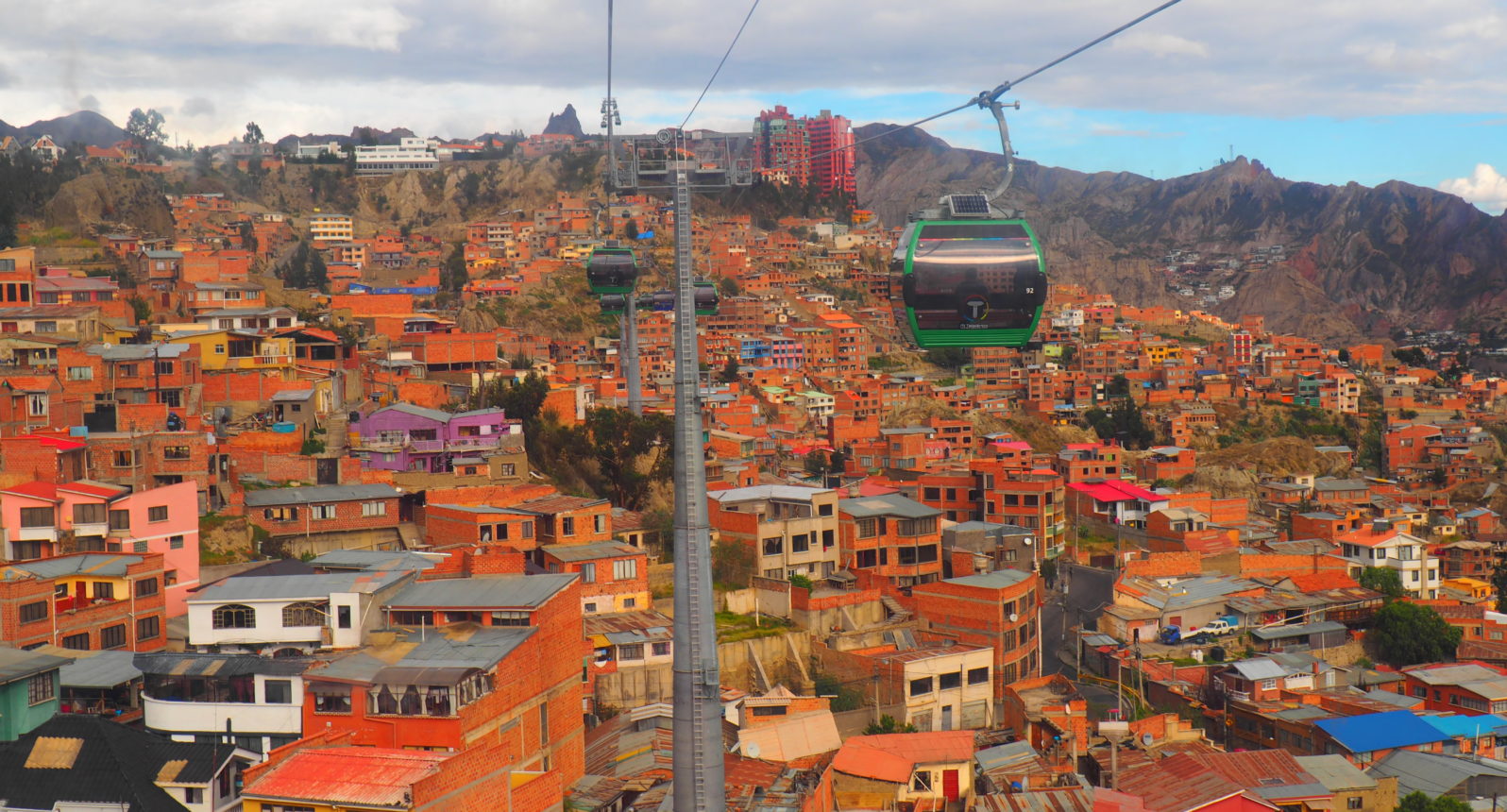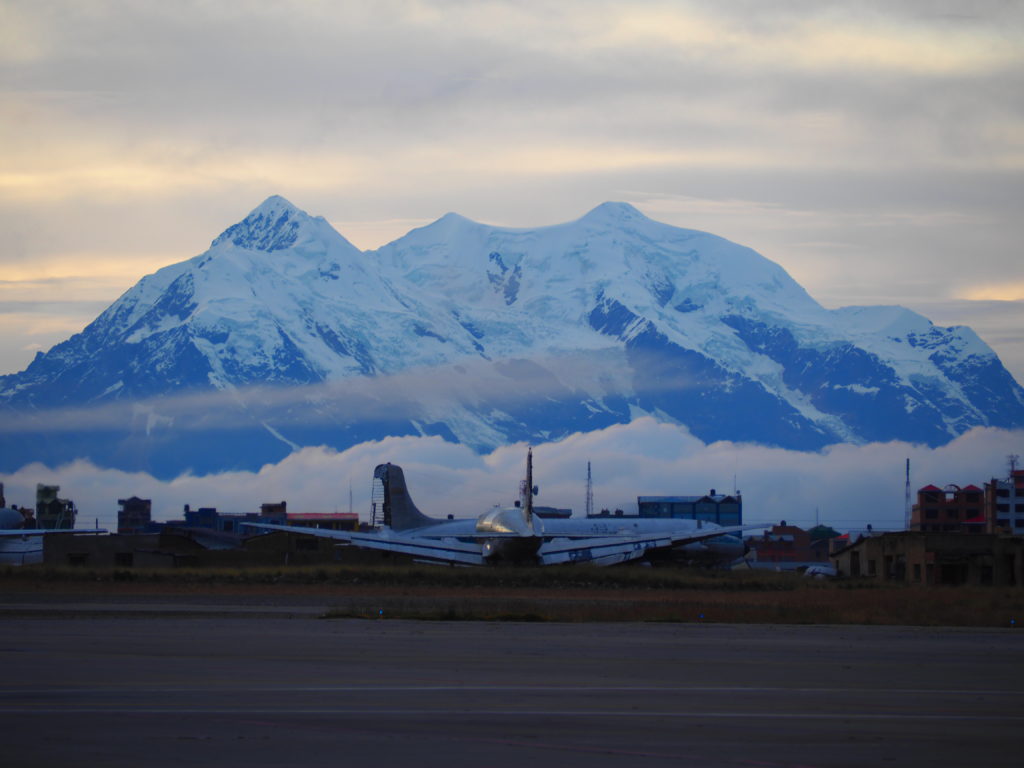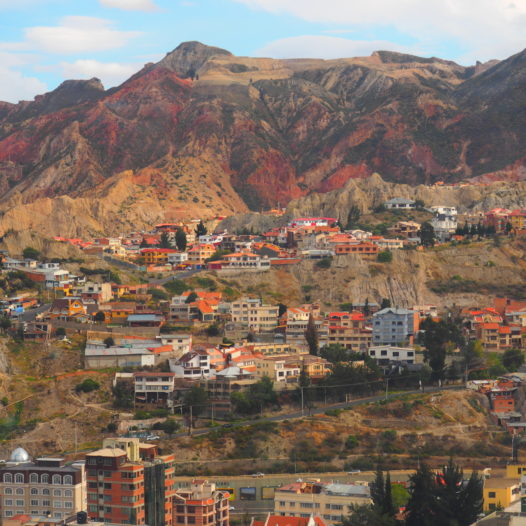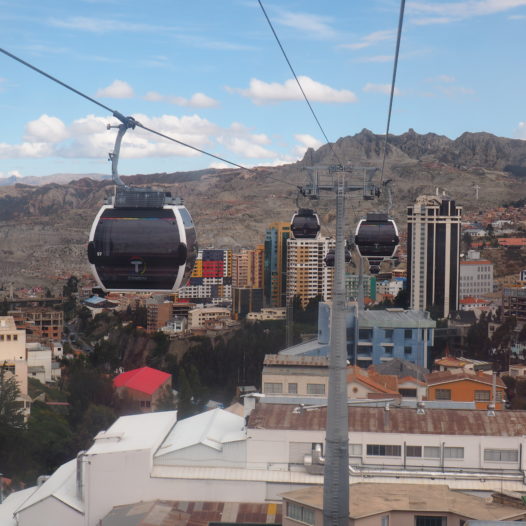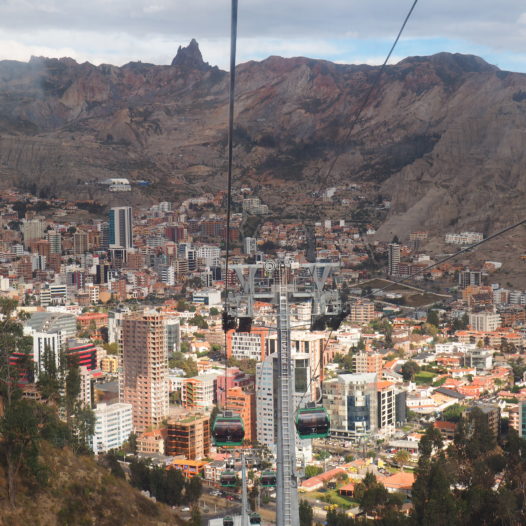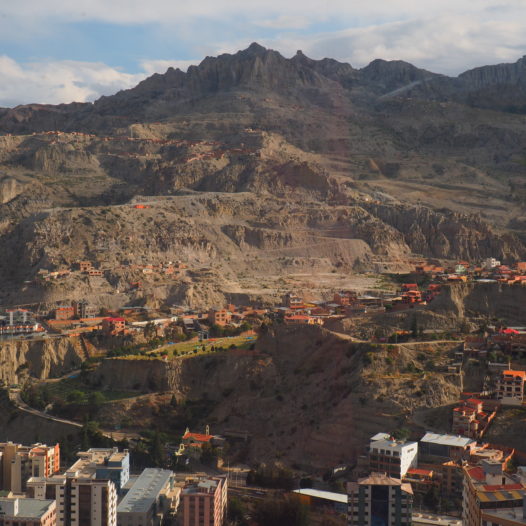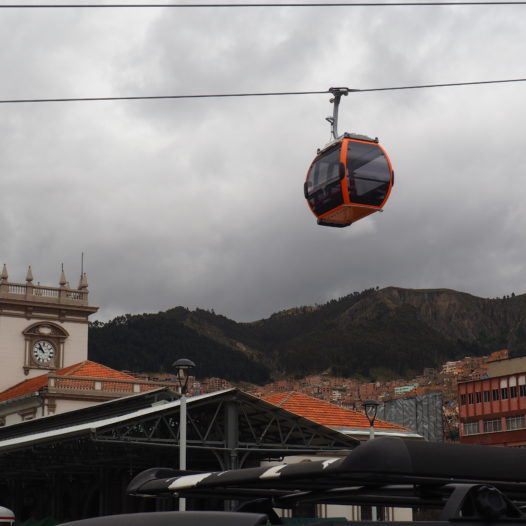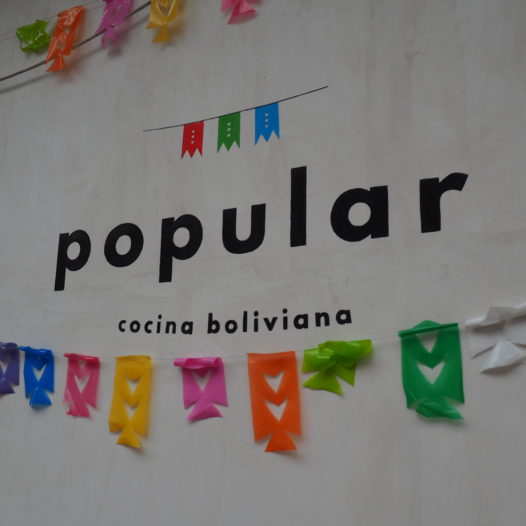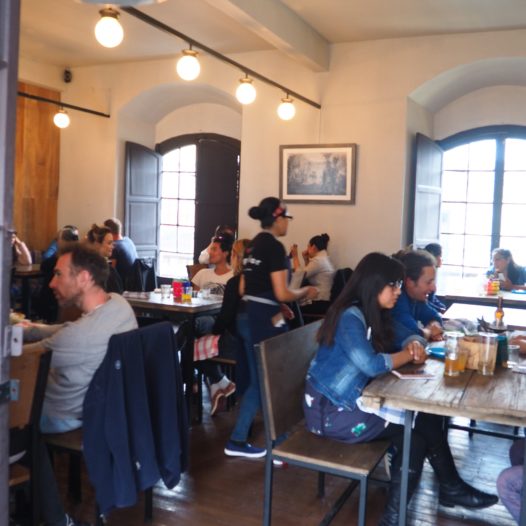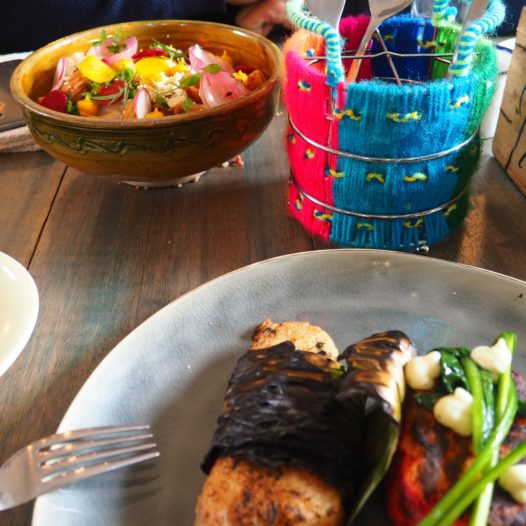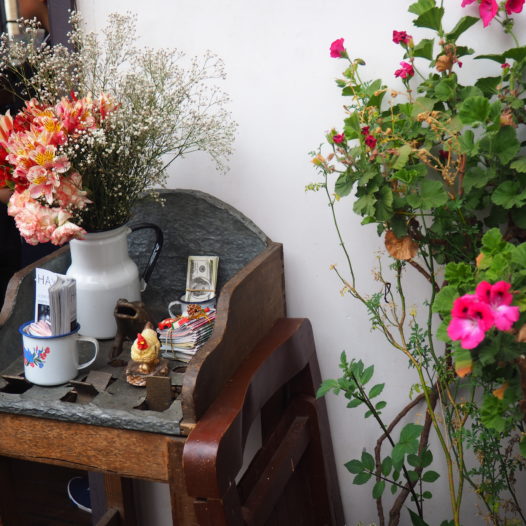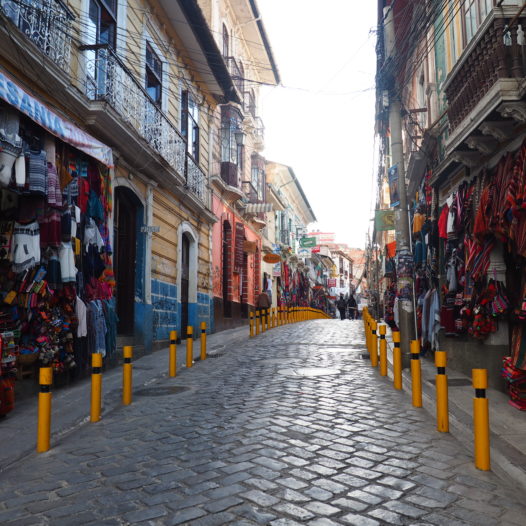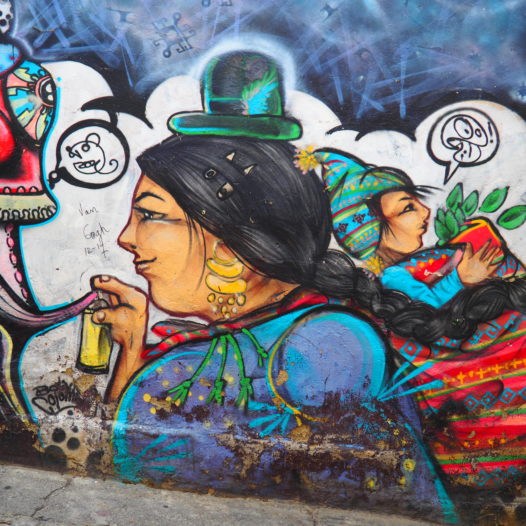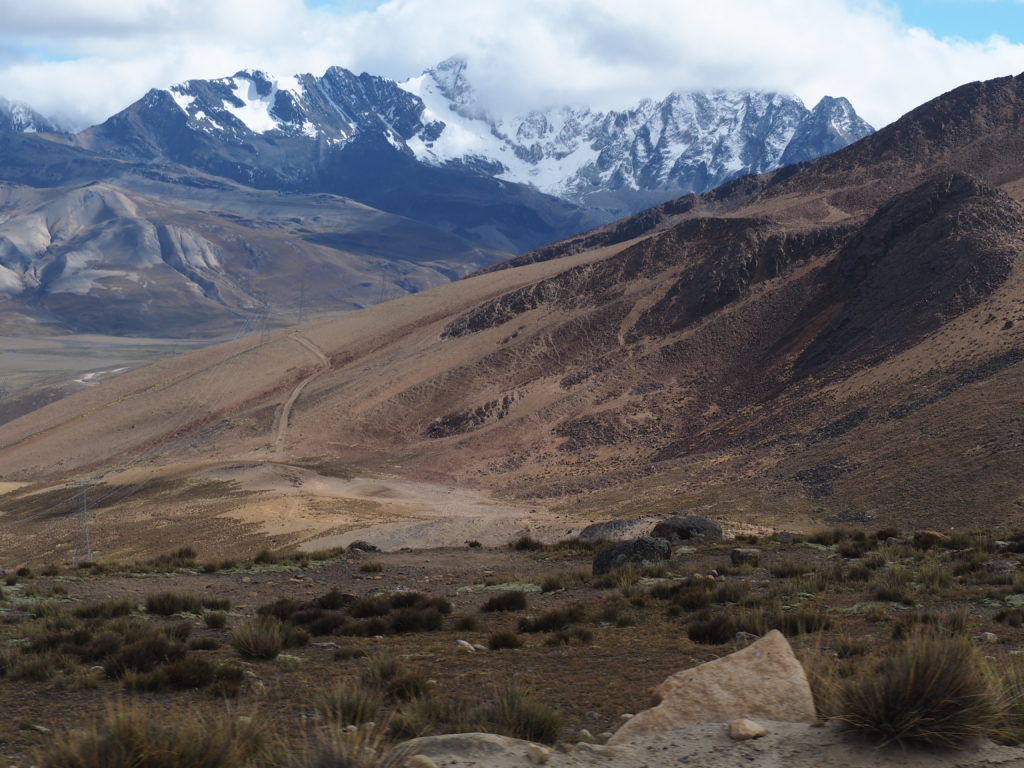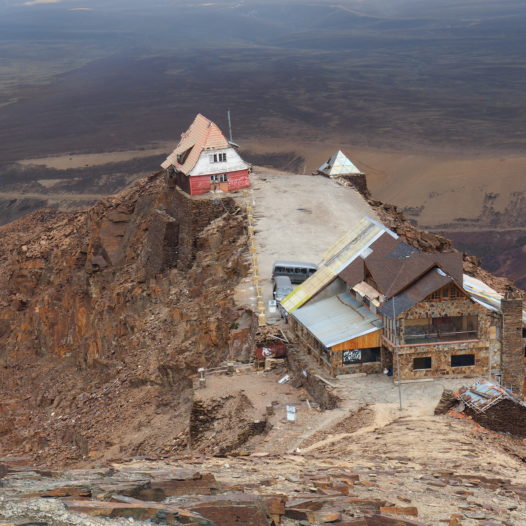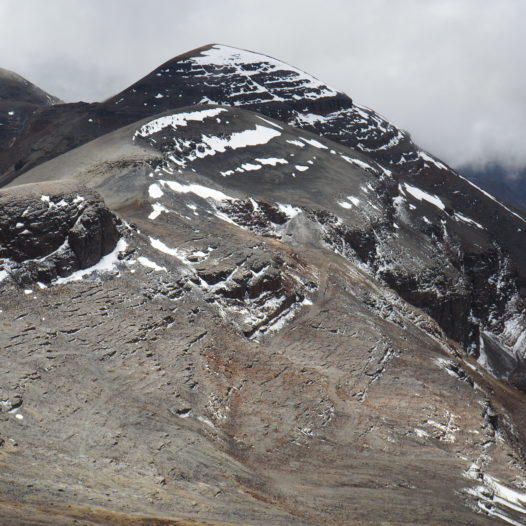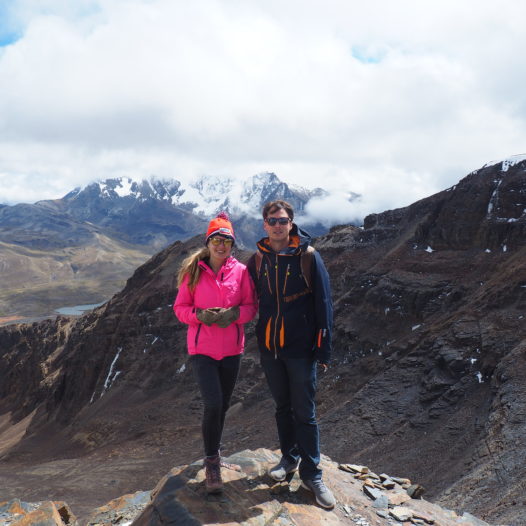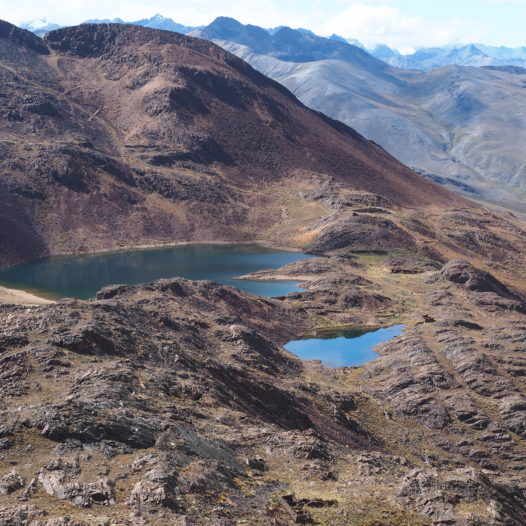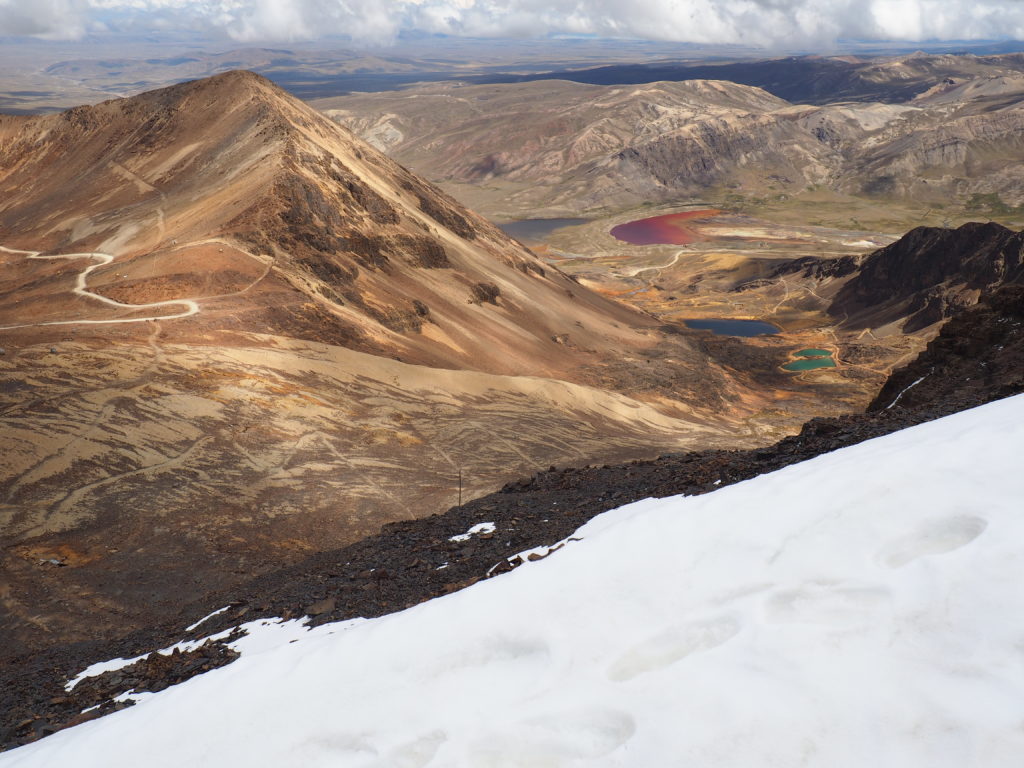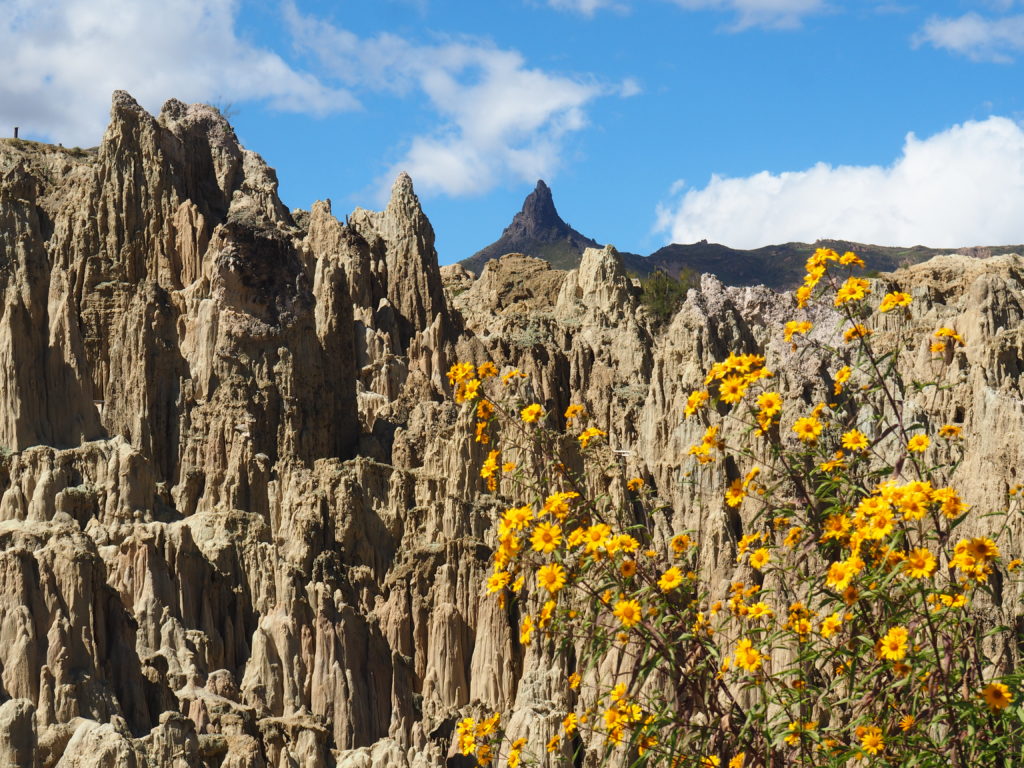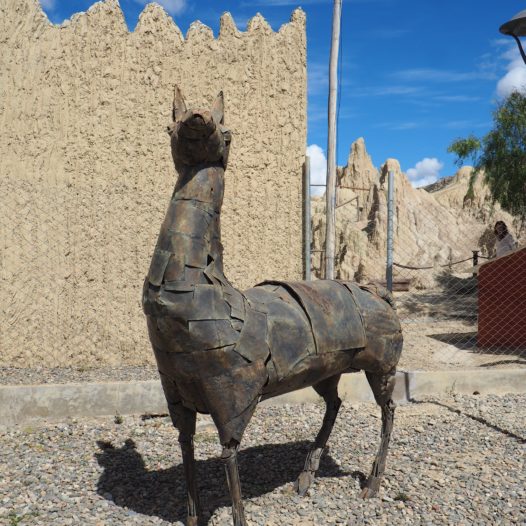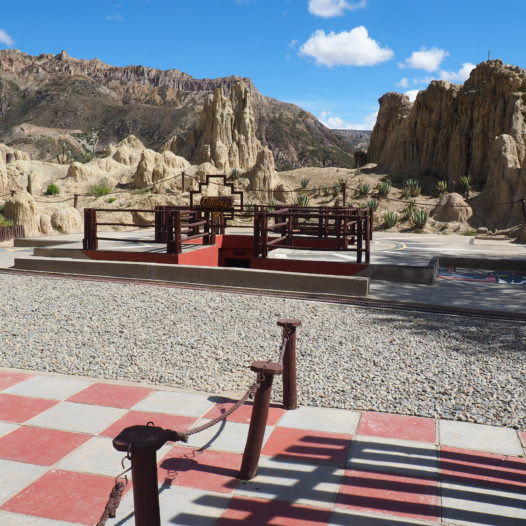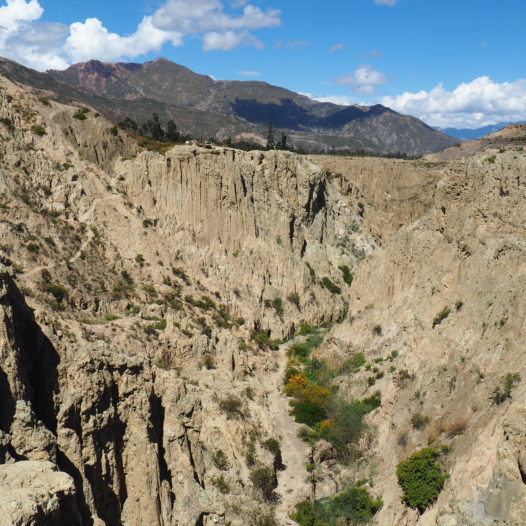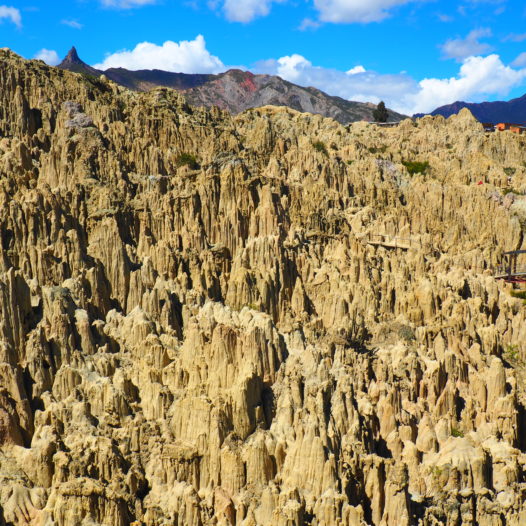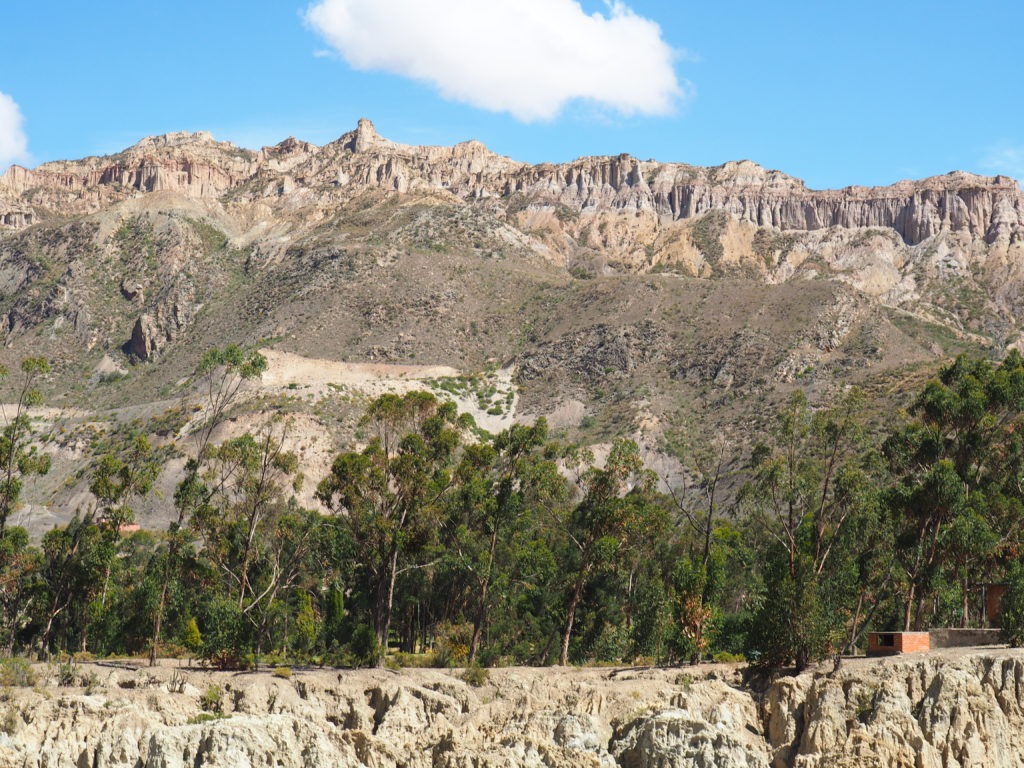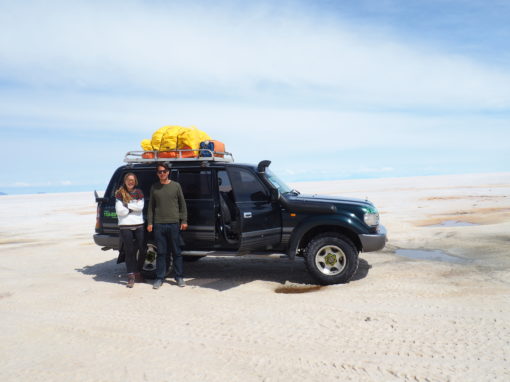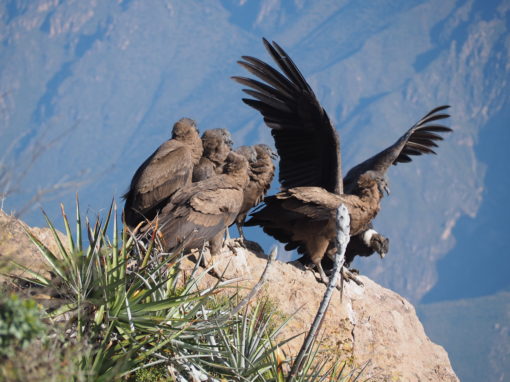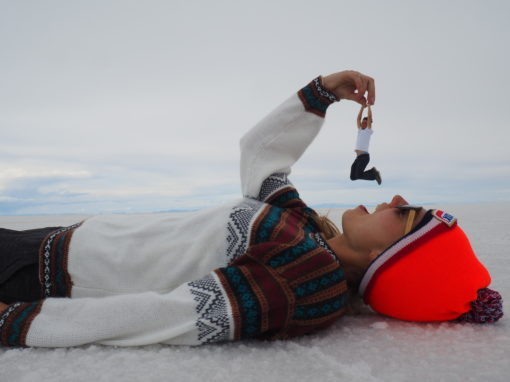Arriving to La Paz by airplane at El Alto International Airport is an experience in itself. The highest airport in the world is perched on the altiplano and surrounded by many gorgeous, snow-capped Andean mountains.
Don’t think it’s only the views that will take your breath away, the altitude will hit you straight in the head too.
As majestic and immaculate the Andean surroundings on the plateau are, as complicated and dusty are the myriad streets of the city center once you descent to the nearby bowl-shaped valley that is La Paz. But if you can see beyond all of the traffic, pollution and those weird animal sacrifices, there’s just something about it this capital.
You just need to know where to go. Galleries, hikes, a top-notch restaurant, natural wonders; this list has it all:
Day 1: Downtown La Paz
9 am – Ride along the Teleférico
Start your day riding the Mi Teleférico: the pride of La Paz! The teleferico is an amazing network of cable cars which transport passengers all over the city with connections to different lines. The best thing of it is that it allows you to see the buzzing city from high above with 360 degrees of panoramic views. Like this you can really understand the sheer size of the city and how it’s been built in a valley in the mountains.
Riding the cable cars is easy. The cost is 3 BOB ($0.4 USD) for a one way ride on each line – which is an incredibly low price. Tickets can be purchased at one of the many stations. On top of that the system is efficient, clean, and very quiet. I guess the pride of the existence of the cable cars translates itself into how the locals treat it; all of the stations are so neat and tidy and with so many employees. It made me think of Medellin; over there no-one would dare to vandalise their metro system either as the locals are so proud of it.
The only pity might be the megalomane pictures of Chavez accompanying every cablecar stop, but hey, something’s gotta give.
12 pm – Lunch at Popular
Come in time in this place, because the title of the small restaurant says it all: it’s a gem and perhaps La Paz’s best public secret. First come, first serve and even before the doors are opened you might already have to wait in line to get in, together with the locals.
Whatever else can I say about this place: it’s probably the best spot for lunch in La Paz. The waiters are attentive, the decoration is simple yet spot on and the vibe is just about right. And I haven’t even talked about the food. The three course lunch menu changes every week and you can choose between two starters, three mains and two deserts. Don’t expect regular stuff, the kitchen crew goes above beyond to make your dish look super swell and tastfull.
This all comes for the spectacular price of $8,- USD per person! Can you believe it?! I still can’t. The downside? Can there be a downside? Well.. it’s only open for lunch. So be there in time!
2 pm – Walking Tour
Honestly, I haven’t done this tour myself, so it’s a bit weird to recommend it, but I encountered several people who were só enthusiastic about the city center tour of Red Cap Walking Tours, that I just have to include it in the list.
Usually I recommend a free walking tour, so that you can give an amount of whatever you like (and on top of that they are often just very good), but free walking tours are not legal in Bolivia, that’s why the guides will tell you right away that you have to pay 20 BOB (as little as $3,- USD) each. Apart from this start amount, the guides appreciate tips very much, especially as this will be their salary.
The tour will lead you through the downtown maze and starts at either 11 am or 2 pm. If you’re in town on Sunday or Thursday, join the extended tour and cholita wrestling. I mean, this just sounds awesome!
5 pm – The Witch market
This small stretch located on Calle Jiminez and Linares between Sagarnaga and Santa Cruz in, isn’t that interesting at first sight. But if you look closely you’ll see that the dozen of vendors over here sell the strangest of stuff: ‘aphrodisiac’, feathers of birds, dried reptiles such as frogs, snakes and turtles used for Aymara rituals and many, many dried llama foetuses that would protect the people from harm. Expect some fortune tellers on the side too.
It might gross you out. Or actually, it will for sure. But it’s just one of those things they you need to see in order to understand the spirit of Bolivia.
6 pm – Shopping street
I hope you end your Latin-American trip in La Paz, because it’s a perfect city to stack up on souvenirs! Colourful bags, sweaters, shoes, dolls, paintings, pots and pans, jewellery… all the typical Andes stuff is in here!
The best shopping streets are located close to the Witch Market. Just continue the street on Linares and don’t forget to swing by the street of Sagarnaga either. It’s basically the same stuff you can find in Peru, but just a tad cheaper although I also noticed it really depends on the product. Perhaps you want one of those fluffy teddybear llama’s for example? Those are for some reason cheaper in Peru.
8 pm – Calle Tarija
With many restaurants and pubs around, this staircase calle is a (safe) spot to spend the rest of your evening. I personally really liked the comfort food kind of dishes of Tierra Sana, but you can also opt for taco’s at La Cueva, pizza’s at Little Italy or a stew at the English Pub. An Indian restaurant is also just around the corner.
DAY 2: Natural miracles outside of La Paz and a cultural boost
8 am – The mountain of Chacaltaya
Get ready for snow and multi-coloured lakes today near La Paz at a VERY high altitude. The mountain of Chacaltaya (5400 meters) is a popular one to visit as it is a very easy one to climb. With little effort, you suddenly find yourself at the same level (actually, even a bit higher) as the Everest Base Camp (both north and south). Insane!
Chacaltaya means ‘bridge of winds’ in one of the local languages. Apparently the mountain was once a place for skiing too (Bolivia’s only ski resort), but services are limited now due to lack of snow since some ten years.
The retreat of the glacier of the mountains in here is a clear indication of climate change in Latin America. It has lost half of its surface area and two thirds of its volume. Just imagine how going down the slopes here must have been like at this altitude. A rush of blood to the head while descending for sure.
Not only the views on top of this mountain are worth it (again, literally breath taking!), so is the ride through the cordillera, the mountain range.
The hike itself to the top takes some 30 minutes, that is if you take it slow. And you probably will, as every 100 meters is another challenge at this altitude. Therefore, don’t do this on your first day of arrival!
1 pm – Valle de la Luna
The ‘Moon Valley’ of La Paz is also a bit of a drive outside of town, but a real favourite to visit. Most of the tour operators offer a Chacaltaya / Valle de la Luna tour if you want to easily combine them without taking public transport.
The moon valley used to be a mountain of clay and sandstone. Over time the mountain was battered by strong winds and washed away by the rain. The severe sun just baked its unusual shaped outcroppings and spires over time into its current shape.
Rumor has it that astronaut Neil Armstrong once played golf at the golf course that adjoins Valle de la Luna. To his opinion the valley really resembled the surface of the moon, thus giving it its name. No idea whether this really is true, but it’s a fun anecdote for sure.
And the golf course really is there, just like a couple of enormous mansions. Clearly this site appeals to the rich and the famous of La Paz. A bit of a shame though, as it diminishes the outlook of the otherworldly valley.
3 pm – Jaén street
Back to the city center! Perhaps the most picturesque street of La Paz, Calle Jaén is worth the small stroll from the main center. From the Witch Market for example, it’ll take you 10-15 minutes to get here.
The buildings in the small and cobble-stoned street are quaint and painted in lolly-hued colours. The shops are quirky, coffeeshops and restaurants prevalent and if you wonder where the museums of this town are, this is the street! Museo de Metales Preciosos, Museo del Litoral, Museo Casa de Murillo, Museo Costumbrista Juan de Vargas, Museo de Instrumentos Musicales… boy, choosing to which one of these to go will be difficult!
So get ready for an upbeat vibe and a cultural (and cafeine-rich) injection!
Extra time? Opt for one of these activities!
-
The Death Road
In 1994 the Yungas Road had the dubious honour of being named as the ‘World’s Most Dangerous Road’, by The Inter-American Development Bank. At the time the organisation had researched that some 200 to 300 people were dying on the road, per year. Due to this immense rate, the road was soon known as ‘El Camino de la Muerte’, ‘The Death Road’.
The Death Road winds for 40 miles through the Cordillera Oriental Mountain and was constructed in the 30s by Paraguayan prisoners.
Despite its history, this exhilarating road is an popular one amongst cyclers. Nearly 25,000 mountain bike riders face the hairpin bends annually. Personally, there’s no way on this earth that I would even consider going there, but if you really want to live on the edge for a day; this is your change!
-
Tiwanaku
Eager to work on your UNESCO bucket list? Between La Paz and Lake Titikaka you can find the former Inca city of Tiwanaku. The Inca considered this spot as sacred and a famous pilgrimage hub. The remains are only a fraction of the former glory, but still very interesting to see. Especially if you’re interested in how the Incan mastered building their famous walls.
-
Huayna Potosi
Time was lacking, but if we had another three days I would have climbed the enormous mountain of Huayna Potosi for sure. After all, who can say that they’ve climbed above 6000 (6088 to be exact) meters? Not that many I guess.
In Bolivia there are six mountains above the 6000 meters line. The great thing about the Huayna Potosi is its proximity to La Paz. Moreover it is possible to climb the mountain within two days.
This climb is no joke. And because of that I’d personally cover the hike in three days, just to make sure you’d survive the enormous difference in altitude. On top of that, give yourself a couple of days in La Paz to adjust. But an adventure it’ll be for sure.
